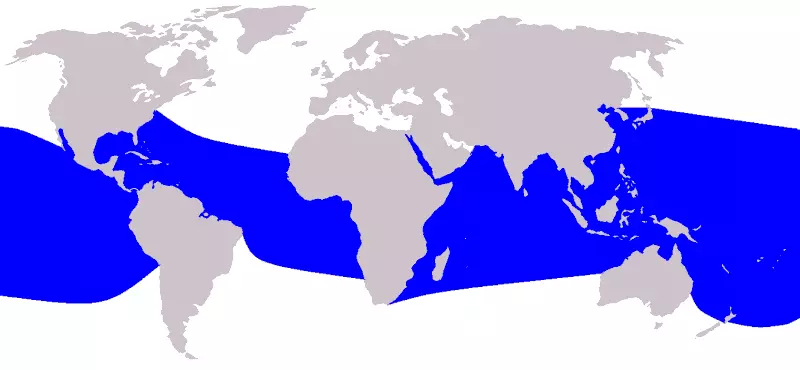The Spinner Dolphin, also known as the Long-Snouted Dolphin, belongs to the family of dolphins (Delphinidae) and is therefore part of the infraorder of whales (Cetaceans). Stenella longirostris was first described by Gray in 1828.
In addition, four subspecies are distinguished at present:
- S. l. orientalis, subspecies in the tropical East Pacific.
- S. l. centroamericana, in the area of Central America, Costa Rica and the Eastern Pacific.
- S. l. longirostris, as nominate-form, also known as Grays Spinner Dolphin, in the central Pacific, thereby mainly around Hawaii
- S. l. roseiventris, the smallest species, first discovered in the Gulf of Thailand
Description, Anatomy & Characteristics
The Spinner Dolphin is essentially lighter with same length than other species. It can grow up to 2.30m long and weigh 80kg. Other dolphin species weigh almost twice as much.
Its hardly sickle-shaped fin and the longish muzzle are striking.
The colouring of Stenella longirostris is dark grey in the back area, light grey on the flanks and whitish in the belly area. This can vary with the individual subspecies.
Habitat, Distribution & Occurrence
Stenella longirostris prefers the high seas and is therefore hardly to be found near the coast. It is found all over the world in tropical and subtropical seas and oceans, most commonly around Hawaii and Mexico.

Due to its preference for very deep marine areas, it is almost impossible to observe it when scuba diving in the Canary Islands. It is also rarely seen during whale watching trips.
Feeding & Biology
The Spinner Dolphin has a predatory lifestyle. It feeds on fish, cephalopods and crustaceans. When hunting it dives up to 300m deep to catch its prey.
Their average life expectancy is 20 years, with the oldest animal having reached 26 years.

References
Image References